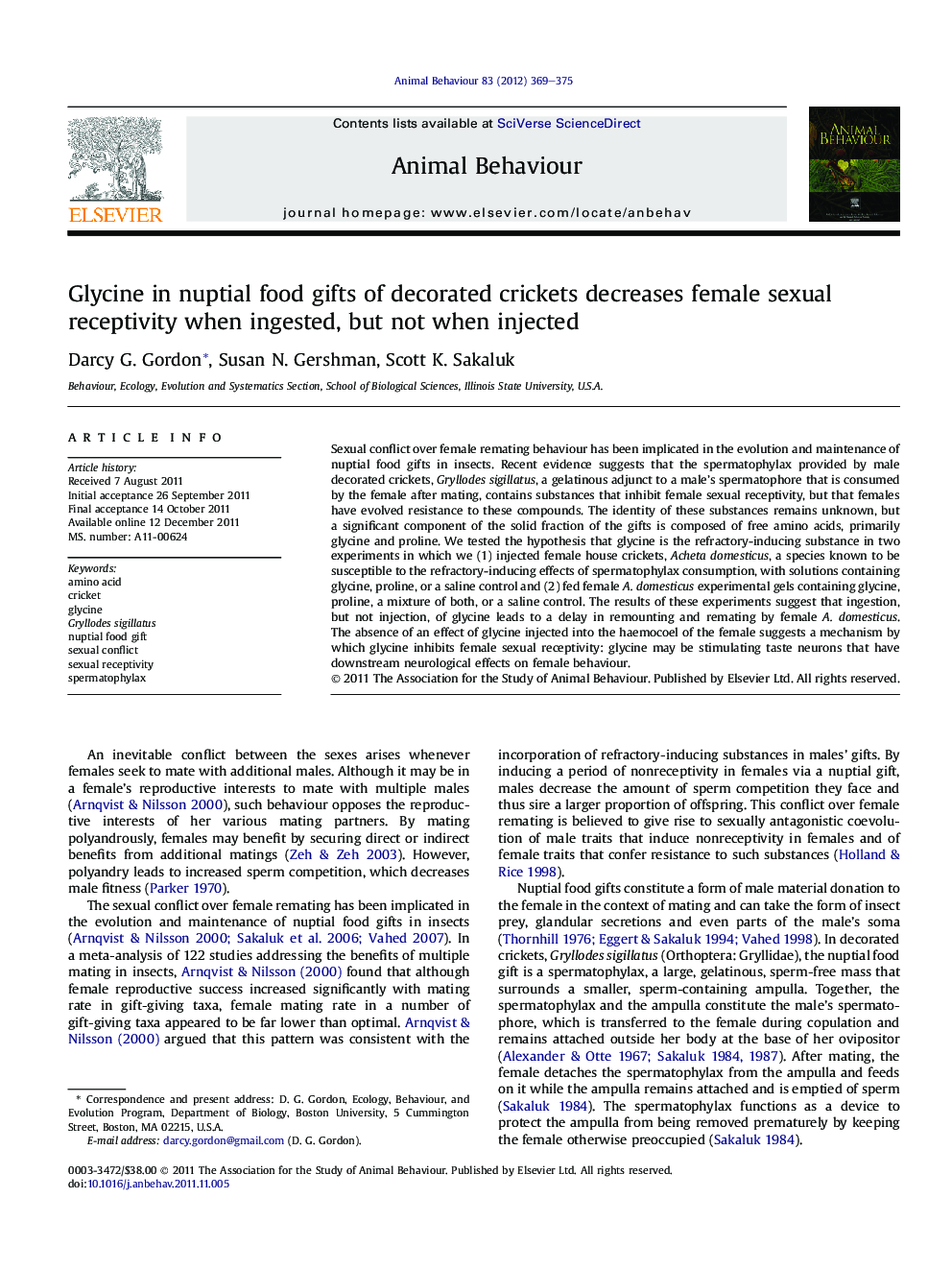| Article ID | Journal | Published Year | Pages | File Type |
|---|---|---|---|---|
| 2416714 | Animal Behaviour | 2012 | 7 Pages |
Sexual conflict over female remating behaviour has been implicated in the evolution and maintenance of nuptial food gifts in insects. Recent evidence suggests that the spermatophylax provided by male decorated crickets, Gryllodes sigillatus, a gelatinous adjunct to a male’s spermatophore that is consumed by the female after mating, contains substances that inhibit female sexual receptivity, but that females have evolved resistance to these compounds. The identity of these substances remains unknown, but a significant component of the solid fraction of the gifts is composed of free amino acids, primarily glycine and proline. We tested the hypothesis that glycine is the refractory-inducing substance in two experiments in which we (1) injected female house crickets, Acheta domesticus, a species known to be susceptible to the refractory-inducing effects of spermatophylax consumption, with solutions containing glycine, proline, or a saline control and (2) fed female A. domesticus experimental gels containing glycine, proline, a mixture of both, or a saline control. The results of these experiments suggest that ingestion, but not injection, of glycine leads to a delay in remounting and remating by female A. domesticus. The absence of an effect of glycine injected into the haemocoel of the female suggests a mechanism by which glycine inhibits female sexual receptivity: glycine may be stimulating taste neurons that have downstream neurological effects on female behaviour.
► Nuptial food gifts of decorated crickets contain glycine. ► Female house crickets were injected with glycine or fed gels containing glycine. ► Females fed glycine-containing gels showed decreased sexual receptivity. ► Glycine may stimulate taste neurons that have downstream effects on behaviour.
